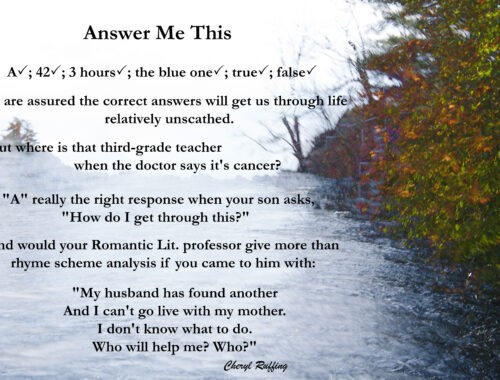
No, One Size Doesn’t Cut It
I like the concept of subsidiarity. An early explanation for the idea can be found in The Old Testament. In the 18th chapter of Exodus, Moses’ father-in-law, Jethro, shows up in the wilderness and observes how Moses interacts with the Hebrews.
On the morrow Moses sat to judge the people, and the people stood about Moses from morning till evening. When Moses’ father-in-law saw all that he was doing for the people, he said, “What is this that you are doing for the people? Why do you sit alone, and all the people stand about you from morning till evening?” And Moses said to his father-in-law, “Because the people come to me to inquire of God; when they have a dispute, they come to me and I decide between a man and his neighbor, and I make them know the statues of God and his decisions.” Moses’ father-in-law said to him, “What you are doing is not good. You and the people with you will wear yourselves out, for the thing is too heavy for you; you are not able to perform it alone” (Ex. 18:13–18).
So Moses heeded Jethro’s advice and chose leaders to act as judges over smaller groups of people: thousands, hundreds, fifties, tens. Only the hardest cases were brought to Moses.
If you imagine the concept of subsidiarity in terms of schoolchildren, it should go like this: a parent is a child’s first teacher, and the parent should direct the child’s education. If the parent decides that the child needs outside instruction, the parent might choose a teacher of some sort, and parent and teacher can then direct the child’s learning based on a balance between understanding what the student needs, is interested in, and might be capable of; and knowledge about the subjects likely to help the student make his way in the world. Additional instructors or mentors would be brought in, as necessary. Like the concentric circles created when a pebble is thrown into a pond, the sphere of influence begins small and gets wider only as necessary.
Is this the way schools work? Well, not if we’re talking about public schools here in twenty-first-century America. In that situation, we are dealing with a pyramid, and the child is crushed at the bottom. At the pinnacle, we have a federal bureaucrat and/or agency creating school policies that are supposed to fit the millions of schoolchildren in the nation. State departments of education come next in deciding standards, curricula, and the like. From there, it all moves down through school boards, administrators, and teachers, until we finally arrive at the individual student, who turns out to be little more than a nameless, faceless product on the conveyor belt that starts in the kindergarten or preschool classroom and ends in an office or factory somewhere.
Keep all that in mind as you read this next passage from Martin Geddes in Open Your Mind to Change: A Guidebook to the Great Awakening:
Psychopaths maintain control and dominance by requiring subordinates to act in accordance with their warped intentions. Their perfect society is one in which information is compartmentalized; they are at the top of the pyramid, while the masses are herded into a hierarchy of scopes of understanding. …
Those at the very top are fully “in the know” and have true intentionality, in this case for the purpose of evil. Those below are fed a false story about the purpose of their activities, and ideally are co-opted to believe that the intentions of those above them are good. After all, the greatest trick the Devil pulls is to tell us he doesn’t exist. Evil must always present itself as good: normal people are hardwired to reject it.
It’s one kind of wrong to suggest that one size fits all, but insisting that the garment made to cover a 300-pound man is not smothering the five-year-old child it has been cast upon is a whole different kind of nefarious.




